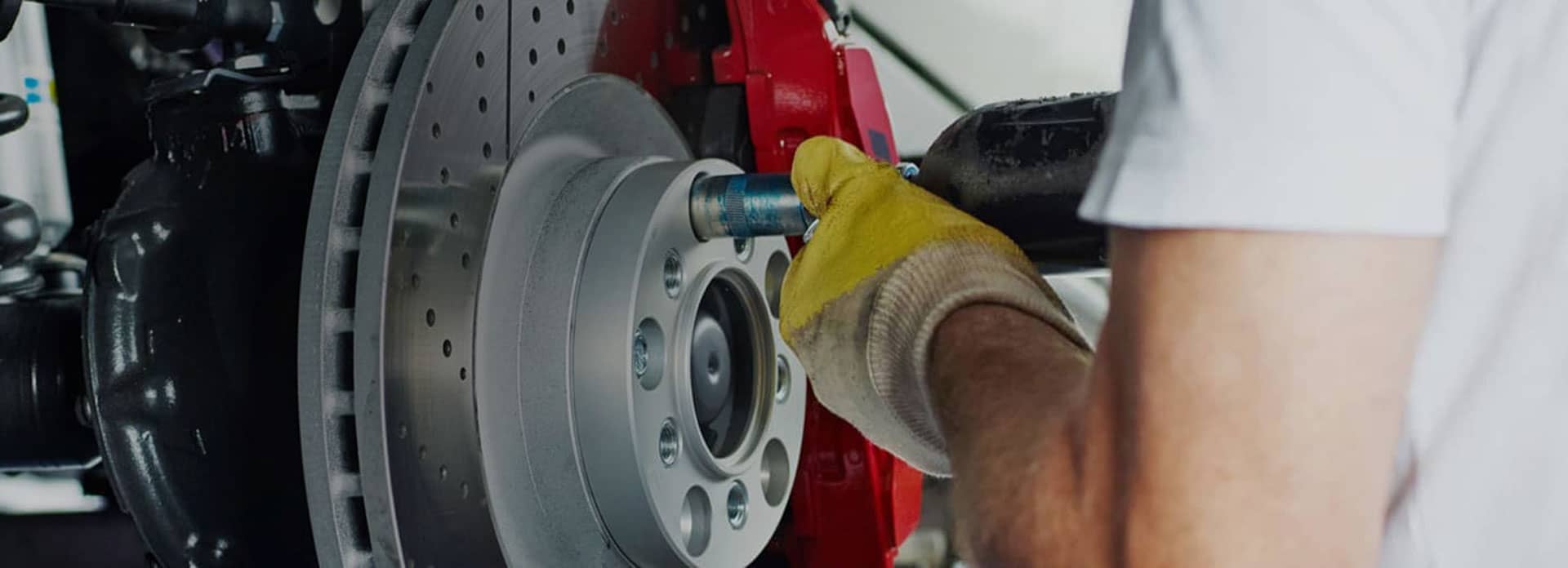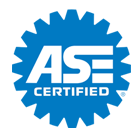
AUTONET TV
Archive for May 2021That Vexing Vapor Venting (Vapor Coming out of Vents)Posted May 30, 2021 9:40 AMYou may have noticed sometimes on a hot and humid day, vapor will come out of your vehicle's vents when you have the air conditioning on. Is that something to be concerned about? Well, it depends. Sometimes that steam or vapor can be caused by water accumulating in the vent system after it has condensed. And sometimes water can pool at the bottom of a vent. When you turn on the blower mower, the air hits the water and may create steam or vapor that you can see in the cabin. One thing to check is if that vapor smells like anything. If it doesn't, that's a good sign. You may be able to run the fan for a while and the issue may just go away when things dry out. But moisture collecting in the ventilation hoses in a hot vehicle may be a breeding ground for mold, and that can have health consequences. There's another possibility. Ventilation systems often have drains to get rid of any accumulated water, and debris can sometimes clog them. A technician can clean out those drains and you'll be back in business. One thing to nose around for is a sweet smell coming out of your vents. Sometimes the heater core (a component of your vehicle's heater system) can develop very tiny holes. That sweet smell may be coolant that's been vaporized by those tiny holes entering your cabin. It's always a good thing to mention to your service advisor any abnormality you're seeing—or smelling—in your vehicle. By venting a little about your vents, a technician can get to the bottom of the problem before it starts "clouding" the issue. autoclinic of brandon If You Drive Like a Maniac (Aggressive Driving is Bad for a Vehicle)Posted May 23, 2021 10:40 AMWhen someone mentions driving like a maniac, they're not talking about you, surely? Besides the safety issues of aggressive driving, you should know that your vehicle will last a lot longer if you'll just mellow out a little. Here are four traits good drivers follow if they want their vehicles to go the extra distance. Cool—The driver who can't wait to get to the next stoplight is just shortening the life of his or her vehicle. Jackrabbit starts and uneven acceleration hurts your engine because the valves and cylinder heads are stressed more. All of those moving parts will wear out faster as well as other components that are connected. That means things like the air conditioner, power steering pump… just about anything that attaches by a belt or a pulley. Oh, and you'll be generating more heat. Heat is one of a vehicle's worst enemies. Warm—If you get in your cold vehicle which has been sitting overnight, start it up and rev the engine high, you've just put a lot of stress on your engine. That's because you didn't let the oil (that's been sitting down in the oil pan at the bottom of the engine) get to the moving parts in order to lubricate them. Some manufacturers advise that you run your vehicle for about 30 seconds before you take off. And if it's really cold out, you may be wise to let the engine run for a minute or two before putting a load on the engine. Also, for the first 5-15 minutes, keep your RPMs on the low side and don't jam on the accelerator. Smooth—You're trying to get somewhere in a hurry and have to jam on the brakes while traveling pretty fast. Just that one time can do more damage to the brakes than you would think. Lots of hard braking can overheat your brakes and damage your rotors, wearing them out way faster than someone who drives with a smoother touch. Hard braking also strains suspension parts, tires and engine mounts. Smart—You know what PRNDL stand for. Those are the letters in your automatic transmission (Park, Reverse, Neutral, Drive, Low). Here are another couple of letters: IQ. A smart shifter never goes into R to D without completely stopping the vehicle, unless, of course, you're anxious to spend some big dollars on your automatic transmission. These days, it's common to get 200,000 miles/320,000 kilometers out of a vehicle, no problem. It just takes regular maintenance (oil changes and regular service) and one other thing. Showing off: showing off a little moderation in driving habits with a big payoff in the end.
Have a Ball! Know your Ball Joints (Ball Joints)Posted May 16, 2021 10:34 AMWe all have joints in our own skeletal system, but did you know your vehicle has some joints of its own? One of the most important is called a ball joint. One of the interesting things is that it's somewhat similar to the ball and socket joints we have in our hips and shoulders. A ball joint allows two parts it joins together to move in more than one direction at the same time. Think about your wheels. They have to move up and down when there are bumps in the road but in sideways directions when you are making a turn. As you can see, the ball joints are important for your steering and handling to work correctly. Since ball joints do so much, they can wear out and become loose. When the ball wears down or the socket gets worn, there can be too much play in them. It can get so bad that the ball can come out of the socket and your wheel can fall off, a dangerous situation. Ball joints can also seize up. Some of them are sealed and never require maintenance; others require periodic lubrication. Here are some signs that your ball joints are going bad:
The earlier a failing ball joint is discovered, the better. The best way is to have regular inspections by a technician. Your service facility will periodically check ball joints at intervals recommended by the manufacturer. The cost to replace them can vary widely depending on whether you have a vehicle with a 2-ball or 4-ball configuration. Also, sometimes just the joints can be replaced, but other times they are part of a larger control arm assembly that has to have all the parts replaced at the same time. Your vehicle's proper steering, handling and tire wear all contribute to a better, safer driving experience. Make sure your ball joints are up to the job. autoclinic of brandon The Truth about Tire Pressure (Tire Inflation)Posted May 9, 2021 7:32 AMMost light vehicles (under 10,000 pounds/4,500 kg) in North America sold from 2008 model year on have a feature that many people are confused about. It's the tire pressure monitoring system (TPMS). You may have some experience with it yourself if you own a newer vehicle. Vehicles with TPMS have sensors in each tire that are supposed to warn the driver when tire pressure gets dangerously low. That's important because tires that are significantly under-inflated can cause very serious accidents. Unfortunately, many drivers think the TPMS does all the work keeping track of tire pressure. To them, as long as the warning light or gauge isn’t giving a warning, the tires must have the proper amount of air pressure in them. That's not the case. Tire pressure monitoring systems aren't all created equal. Some give you a digital readout of the pressures in each individual tire. But many simply have a warning light that looks like the cross section of a tire with an exclamation point in the middle. If you don't know what it is, it's because it's not instantly recognizable as a tire. In fact, one company that makes TPMS, Schrader Performance Sensors, surveyed drivers. Their study showed that more than 40 percent of drivers didn't know that that warning light was. One out of 5 of the drivers who did know what the light was only looked at their tires after the light came on to see if they could see any that needed air; they never checked them with a tire gauge or had someone else do it. Ten percent of them didn't do anything when the light came on. In most vehicles with TPMS, the warning comes on only when the tires are more than 25% underinflated. The American Automobile Association says that's under the pressure you need for safe vehicle operation. The bottom line is once a month you should make sure your tires are inflated to the manufacturer's recommendations. That means each tire should be measured with an accurate, external tire gauge. To be confident you are getting a correct reading, take your vehicle to a reputable service facility where their equipment is calibrated and they know what they're doing. Severely underinflated tires can contribute to an accident that kills or severely injures people. The idea behind TPMS is well intended, but the system was never meant to replace regular inflation measurements and maintenance. Periodically have your tires checked for proper inflation. autoclinic of brandon Conventional or Synthetic? (Switching to Synthetic Oil)Posted May 2, 2021 8:56 AMIf you keep up on technology trends, then you may be intrigued about synthetic motor oil. It was introduced in the 1960s when Mobil came up with it. Mobil's oil was different from conventional motor oil because it was first broken down to its basic molecules. Then, Mobil removed additional impurities from crude oil and "tailored them to the demands of modern engines." Synthetic oil is becoming more popular now because of its advantages over conventional oil. It's more resistant to sludge forming in an engine. It is more efficient and protects engines better under temperature extremes. Because it allows drivers to go longer between oil changes, many feel it's more convenient. The downside is that synthetic oil is more expensive, but because it doesn't need changing as often, the cost can be pretty comparable in the long run. Those who drive high performance vehicles (think Audi, BMW, Mercedes) are already using synthetic oil if they're following their manufacturer's guidelines. Other manufacturers recommend a synthetic blend. So for those who are using conventional oil, you may want to consult your service advisor for some recommendations if you want to switch to synthetic. If you're the type who always waits until the last-minute or doesn't ever get in quite in time for the recommended oil change interval, the longer gap required between changes with synthetic oil may appeal to you. In some cases, you can go up to 15,000 miles/24,000 km between changes. If you drive in a very cold climate, synthetic oil can flow more easily at startup and may offer quicker engine protection. On the other hand, in hot climates, synthetic oil can resist heat breakdown better. Or you may be one of those drivers who have been getting along fine with conventional oil changes. Millions do. Just remember that changing your oil is considered the most important maintenance you can do on your vehicle, so make sure it's done at the right time and with the oil that best suits your driving needs. autoclinic of brandon | ||
SearchArchiveDecember 2009 (3)January 2010 (3) February 2010 (4) March 2010 (4) April 2010 (5) May 2010 (2) June 2010 (1) July 2010 (4) August 2010 (4) September 2010 (3) October 2010 (3) November 2010 (4) December 2010 (5) January 2011 (4) February 2011 (4) March 2011 (5) April 2011 (4) May 2011 (4) June 2011 (1) August 2011 (3) September 2011 (3) October 2011 (2) December 2011 (4) February 2012 (2) March 2012 (4) April 2012 (4) May 2012 (1) June 2012 (3) July 2012 (1) August 2012 (1) November 2012 (1) December 2012 (2) March 2013 (1) April 2013 (4) May 2013 (1) September 2013 (1) October 2013 (5) November 2013 (2) January 2014 (2) February 2014 (4) March 2014 (1) July 2014 (4) August 2014 (7) September 2014 (4) October 2014 (5) November 2014 (4) December 2014 (4) January 2015 (5) February 2015 (4) March 2015 (4) April 2015 (4) May 2015 (3) June 2015 (5) July 2015 (1) September 2015 (2) October 2015 (4) November 2015 (5) December 2015 (2) February 2016 (2) March 2016 (3) April 2016 (4) May 2016 (5) June 2016 (4) July 2016 (5) August 2016 (4) September 2016 (4) October 2016 (4) November 2016 (5) December 2016 (4) January 2017 (5) February 2017 (4) March 2017 (4) April 2017 (4) May 2017 (5) June 2017 (4) July 2017 (5) August 2017 (3) September 2017 (3) October 2017 (4) November 2017 (5) December 2017 (3) January 2018 (5) February 2018 (4) March 2018 (4) April 2018 (5) May 2018 (4) June 2018 (3) July 2018 (5) August 2018 (4) September 2018 (5) October 2018 (4) November 2018 (4) December 2018 (5) January 2019 (5) February 2019 (4) March 2019 (5) April 2019 (4) May 2019 (4) June 2019 (5) July 2019 (4) August 2019 (4) September 2019 (5) October 2019 (4) November 2019 (4) December 2019 (5) January 2020 (5) February 2020 (4) March 2020 (5) April 2020 (4) May 2020 (5) June 2020 (4) July 2020 (4) August 2020 (5) September 2020 (4) October 2020 (4) November 2020 (5) December 2020 (4) January 2021 (6) February 2021 (4) March 2021 (4) April 2021 (4) May 2021 (5) June 2021 (4) July 2021 (4) August 2021 (5) September 2021 (4) October 2021 (5) November 2021 (4) December 2021 (4) January 2022 (6) February 2022 (4) March 2022 (4) April 2022 (4) May 2022 (5) June 2022 (4) July 2022 (5) August 2022 (2) September 2022 (4) October 2022 (5) November 2022 (4) December 2022 (4) January 2023 (5) February 2023 (4) March 2023 (4) April 2023 (5) May 2023 (4) June 2023 (4) July 2023 (5) August 2023 (4) September 2023 (3) October 2023 (3) January 2024 (1) February 2024 (4) | CategoriesService Standards (12)Parts (7)Automotive News (8)Maintenance (52)Fuel System (46)Tires and Wheels (40)Transmission (11)Monitoring System (3)Dashboard (3)Steering (14)Battery (20)Drive Train (9)Service Intervals (9)Brakes (22)Cabin Air Filter (8)Fluids (16)Shocks & Struts (9)Windshield Wipers (9)Timing Belt (6)Inspection (10)Headlamps (6)Alignment (16)Check Engine Light (6)Cooling System (19)Safety (6)Air Conditioning (17)Differential Service (3)Diagnostics (5)Exhaust (12)Fuel Economy (10)Engine Air Filter (2)Keys to a long lasting vehicle (4)Diesel Maintenance (1)Suspension (3)Serpentine Belt (6)Older Vehicles (4)Emergency Items (1)Winter Prep (7)Auto Safety (6)Alternator (6)Trip Inspection (4)What Customers Should Know (81)Warranty (1)Tire Rotation and Balancing (3)Customer Detective Work (1)Wheel Bearings (1)Oil Change (7)Fuel Saving Tip: Slow Down (2)Safe Driving (1)Tires (10)Spark Plugs (2)TPMS (3)Water Pump (1)Winter Tires (1)PCV Valve (2)Brake Service (4)Fuel Pump (1)Transfer Case Service (1)Shocks and Struts (1) | |

Get free Coupons
Take advantage of these great offers!



.png)






